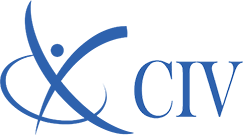One of the key requirements of an efficient business unit is the commitment to equip its employees with the best possible business processes. Through the application of our analytical framework, and with a supportive pragmatism, CIV has done just that for some of the largest Financial Services corporations in the world. CIV provides a wider industry view of the most effective techniques and makes tangible, actionable recommendations to improve business process.
- Process Optimization
- Future State Process Design
- Merger and Acquisition Integration
- Call Center Optimization
CIV’s framework addresses its clients’ most critical pain points by guiding the process of defining the productivity, service, and quality measures which have the greatest impact and implementing redesigned processes and quick, effective technology solutions, through a collaborative approach that stresses the sense of “client ownership” of their results.
Case Studies
New Business & Underwriting Application Prioritization
CIV worked to develop an understanding of the productivity capabilities and rates of their New Business and Underwriting Teams, using this understanding to calculate that it would take a matter of years (at the existing staffing levels) to clear the backlog. CIV conducted a by-agency quality review of the business and developed a prioritization schema that allowed management to quickly determine the order in which the applications should be processed.
By understanding the relative priority of applications, and handling the high priority cases first, CIV was able to help the carrier clear the backlog in a matter of weeks.
Underwriting Productivity and Process Assessment
The primary reason the underwriters were reviewing fewer cases per day than their peer companies was that there were fewer cases to review. The carrier had experienced a sharp drop in submission volume, and while their underwriting headcount was shrinking through attrition, the rate of application submission decline was significantly higher than the rate of headcount decline.
The current processes, technologies, and performance measurement standards were not sufficiently mature to identify that this was occurring, let alone provide any early warning or suggested actions.
CIV addressed this situation through developing reflexive transaction based staffing models with which the management team could determine how many underwriters were actually needed at specific volumes, and allowing for significant reassignment of existing underwriting staff to other tasks. Along with the staffing models, CIV presented a series of suggested process improvements, leading to further efficiencies and annual savings in the hundreds of thousands of dollars.
New Business & Underwriting Operational Assessment
CIV assessed the technology maturity, process efficiency, unit cost, staffing, productivity, and metrics/reporting capabilities of the New Business and Underwriting Department. This assessment resulted in roughly 30 actionable recommendations ranging from technical functionality to increased productivity expectations to business function realignment. To date, implementation of selected recommendations has yielded savings of up to 25% in specific business areas.
